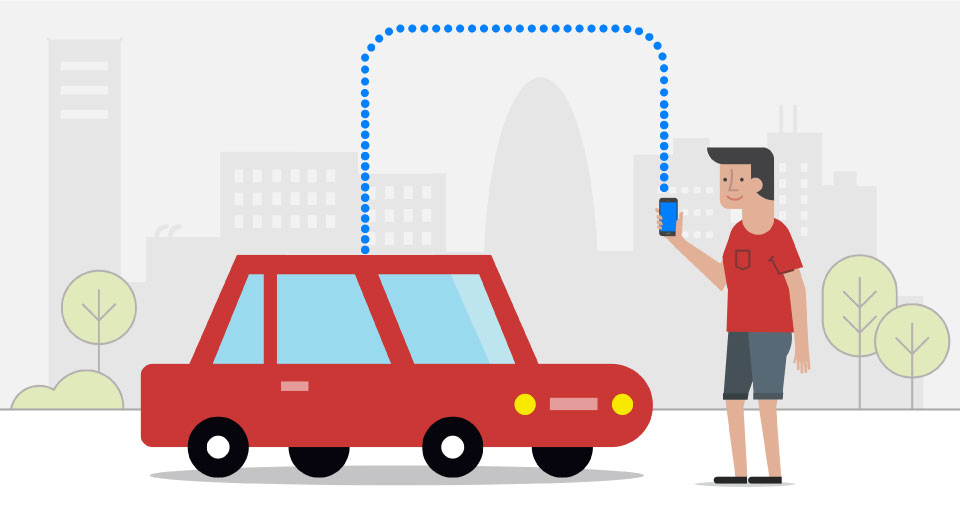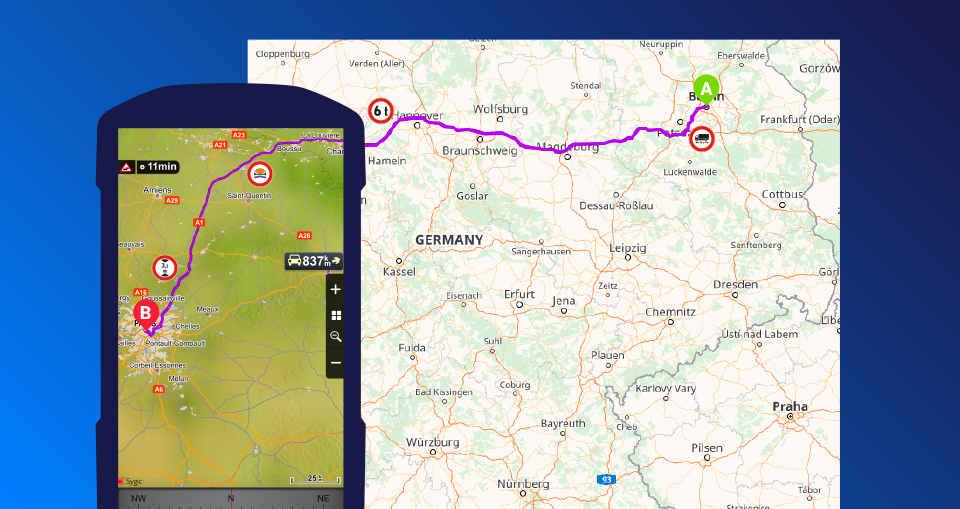How long do you think it takes to set a navigation destination on your phone? And how much time do you need to refocus your eyes from the road to a phone display and back in order to find the nearest refueling opportunity? Every second of distraction can increase the risk of collision. Let’s look at Android Auto and Sygic features that can help you use your navigation system effectively and enhance your safety behind the wheel. What to do and why?
1. Connect your mobile to a car display
From this year, Android users can clean their car windshields, lay their phones on the center console, and then mirror their mobile navigation apps to their in-car displays. (Is your car compatible with Android Auto? Find out here.)
Thanks to the availability of Sygic on CarPlay (since 2018) and Android Auto (coming in 2021), the safety of driving with navigation is increasing for those who prefer to use apps other than Maps, Google Maps, or Waze by Apple and Google. Sygic will be one of the first compatible third-party apps to become available for use as a navigation system.
Mirroring navigation onto a car screen is much safer than displaying it via a mobile. There are several reasons for this, stemming from the fact that car displays are bigger and are located directly in the driver’s field of vision. To control anything via a car display while driving is convenient. However, remember that in the EU, it is a legal requirement that drivers set their navigation routes only before starting their journeys.
2. Talk to your navigation
Provided Sygic is the last app opened on Android Auto via your car display, you can instruct it to “navigate to” a spoken address or “search for” an address with your voice. Sygic can hear these commands via Google Assistant, so you don’t need to type your destination.
You can let Sygic navigate you via voice instructions in any of the 49 available languages, so just turn them on! Thanks to the Android Auto connection, you can clearly hear the instructions via your vehicle’s built-in sound system and won’t need to check the display constantly.
3. Drive with offline maps and sophisticated safety features
Being dependent on an internet connection is one of the most significant weaknesses affecting many apps, which need a constant data signal. But even if you have poor internet reception, or none at all, with Sygic, you won’t miss your turning. Compared to the native Apple and Google navigation apps, which run only with an internet connection, Sygic’s maps and several of its functionalities are always available.
Besides voice control, Sygic’s other offline safety-focused features include predictive routing, speed limits and simple lane guidance. These help you to stay relaxed and effective even when you’re driving in a new city or on unfamiliar roads.
For news about Sygic on Android Auto, stay tuned by following us on Facebook, Twitter or LinkedIn, and get prepared for Sygic to appear on your in-car display in all its glory!



